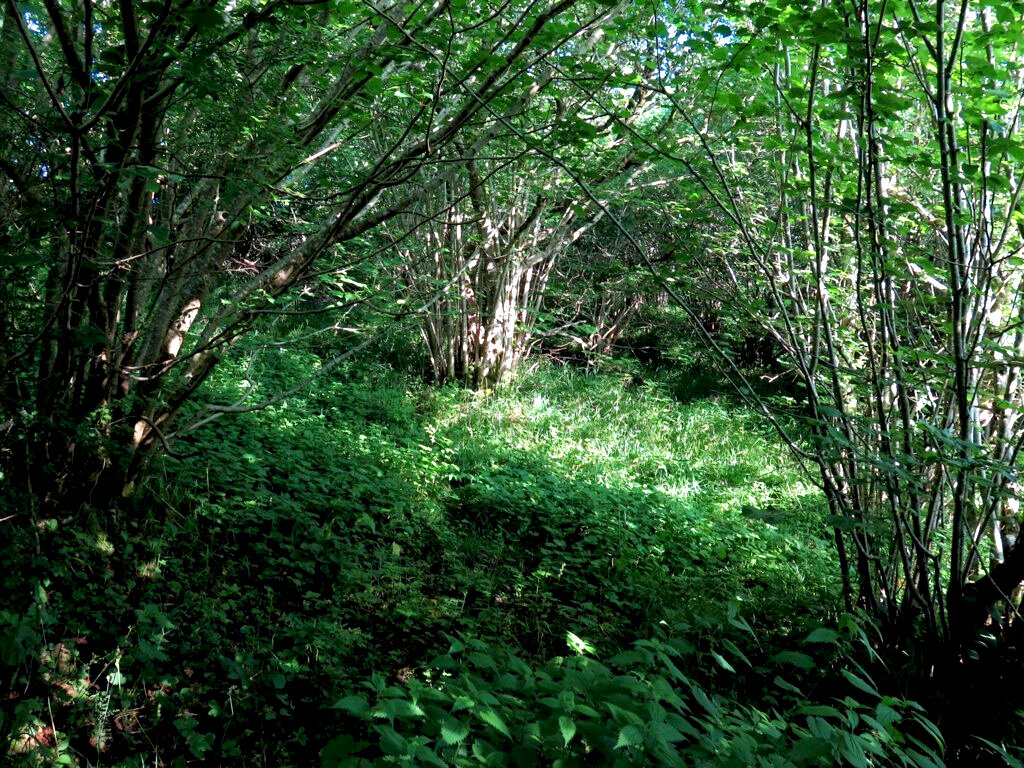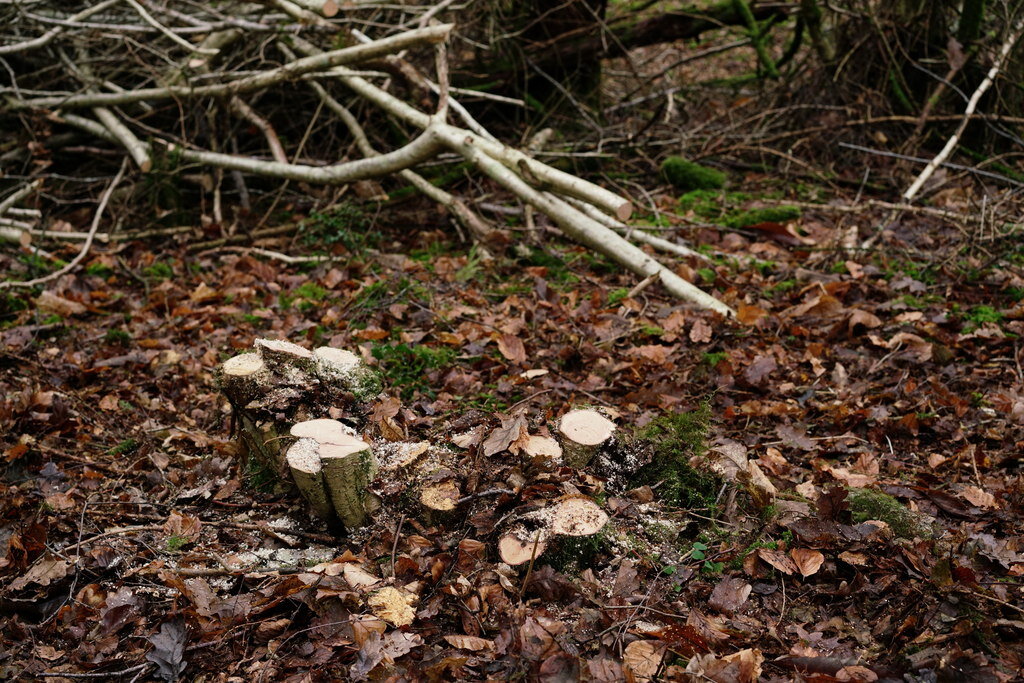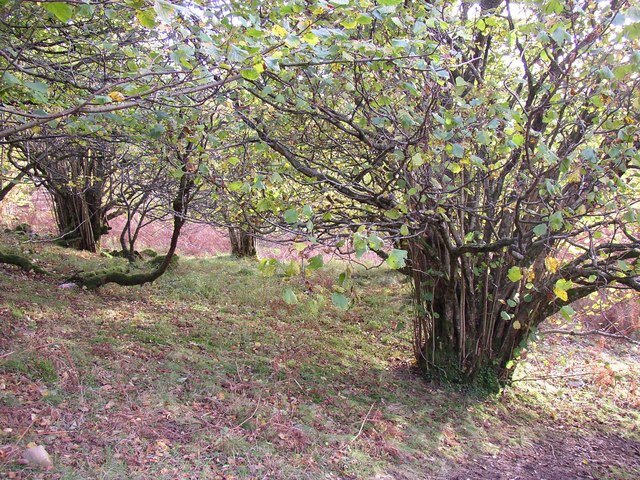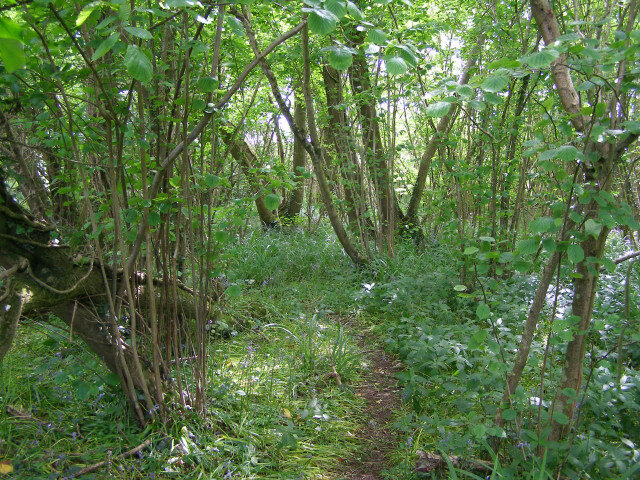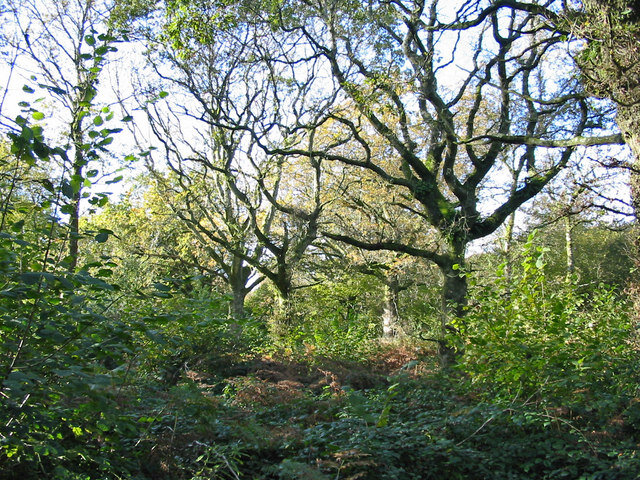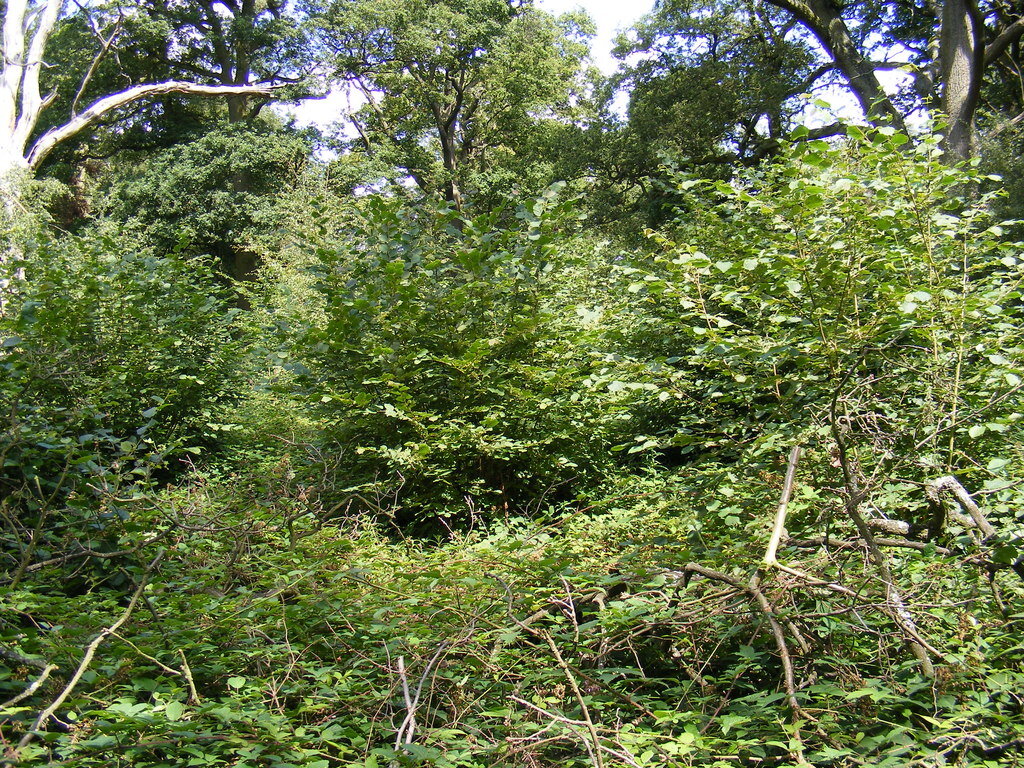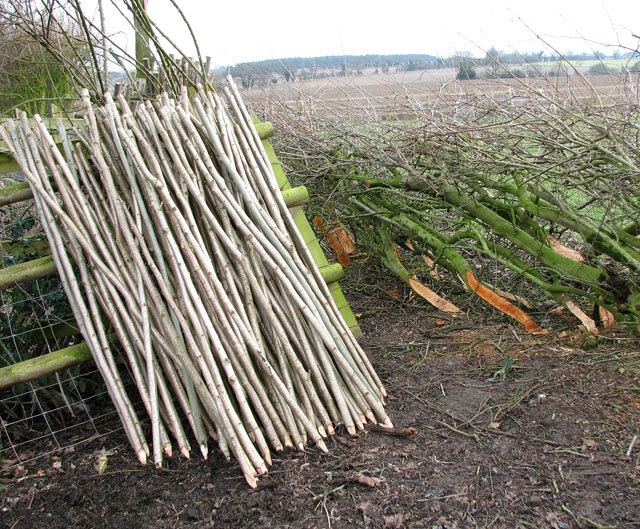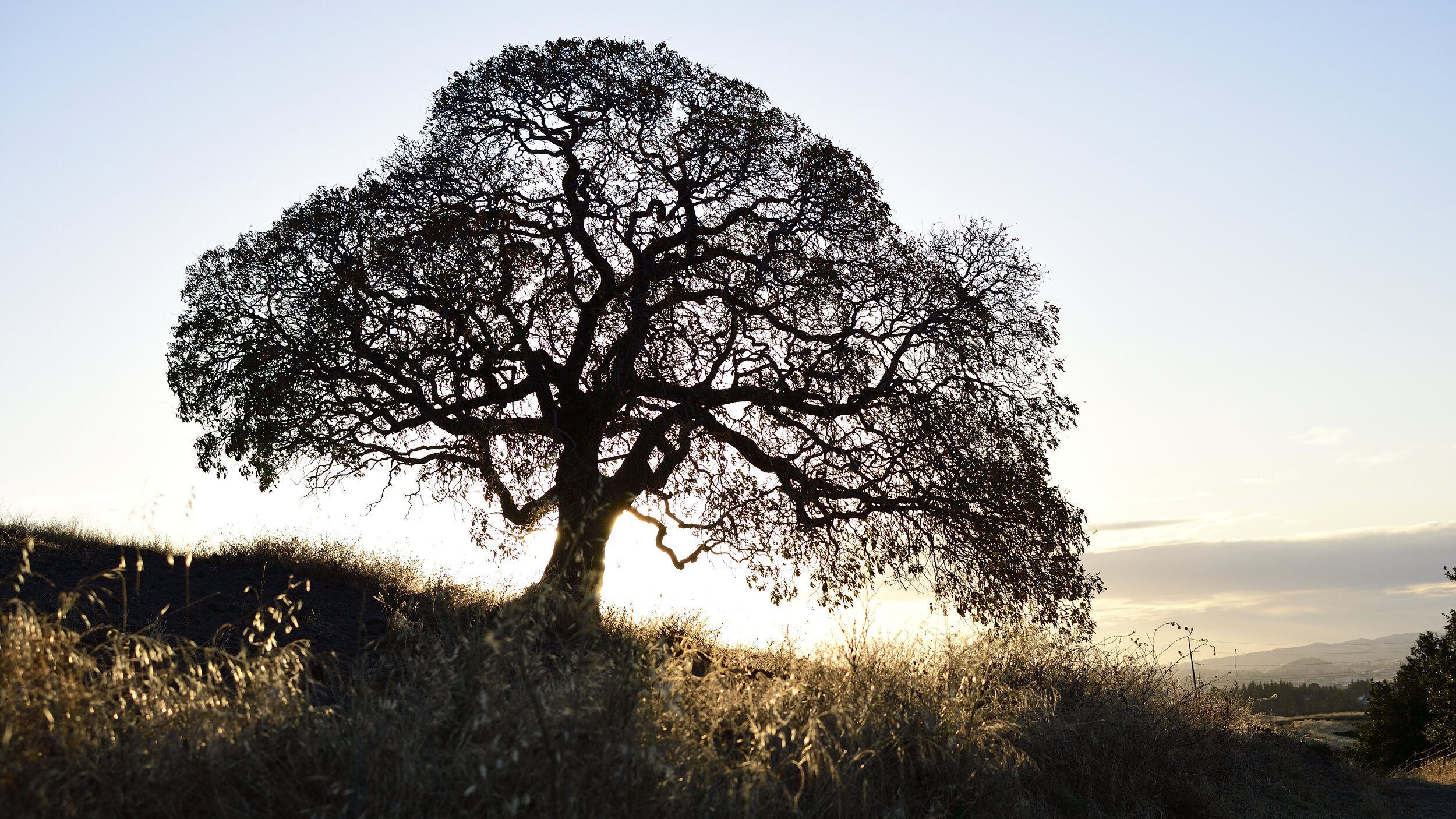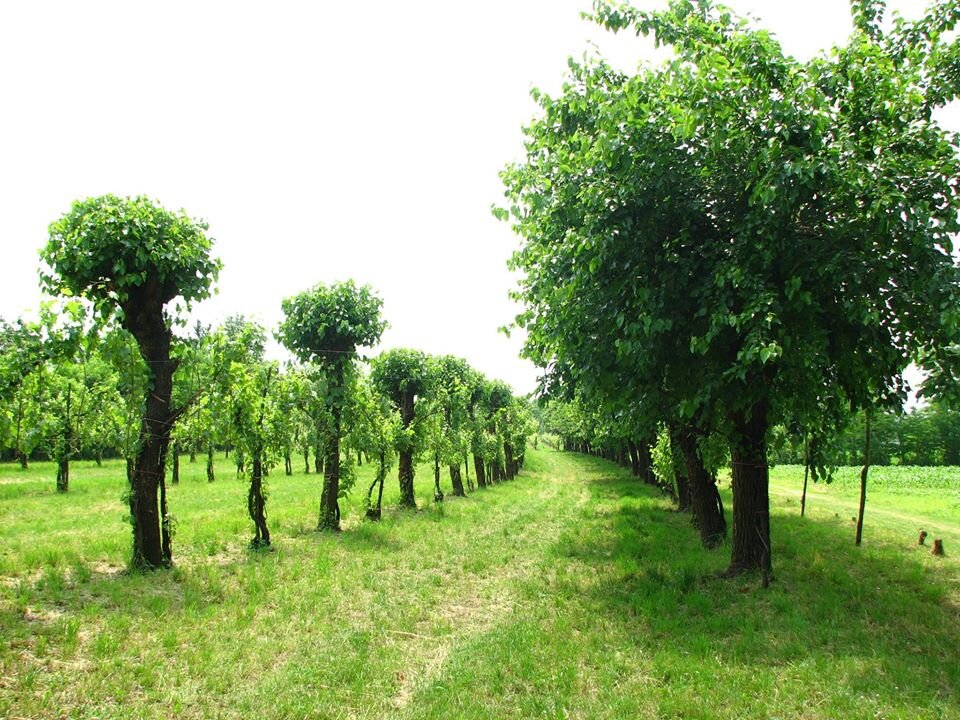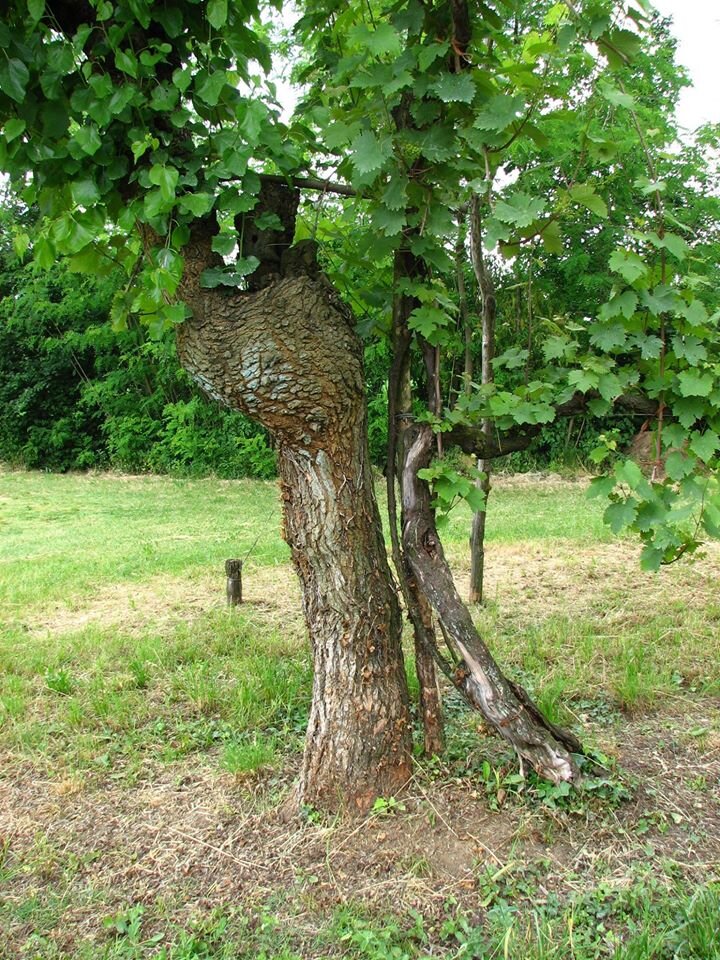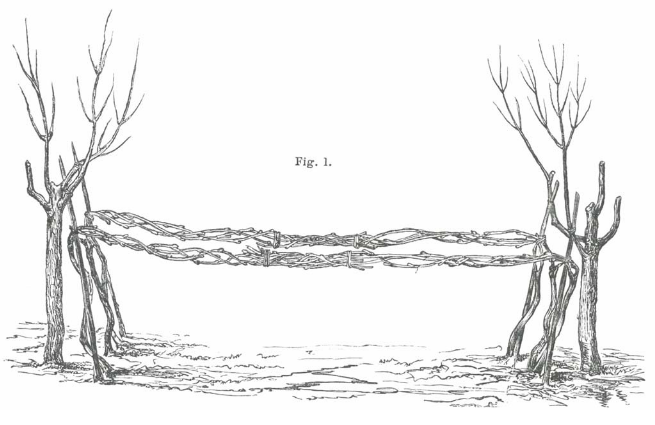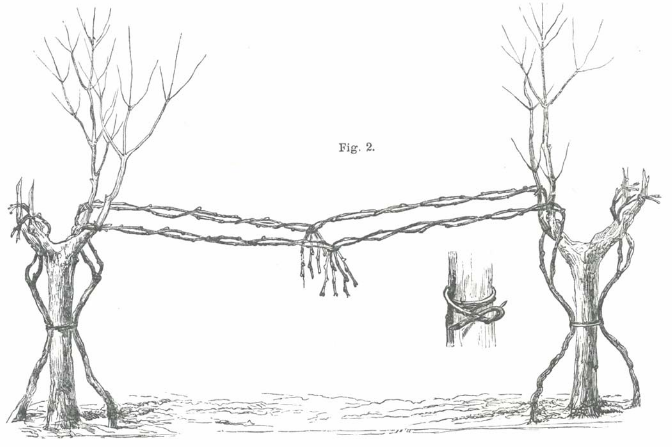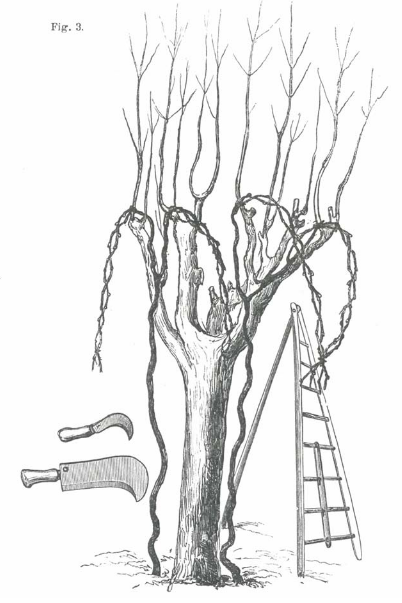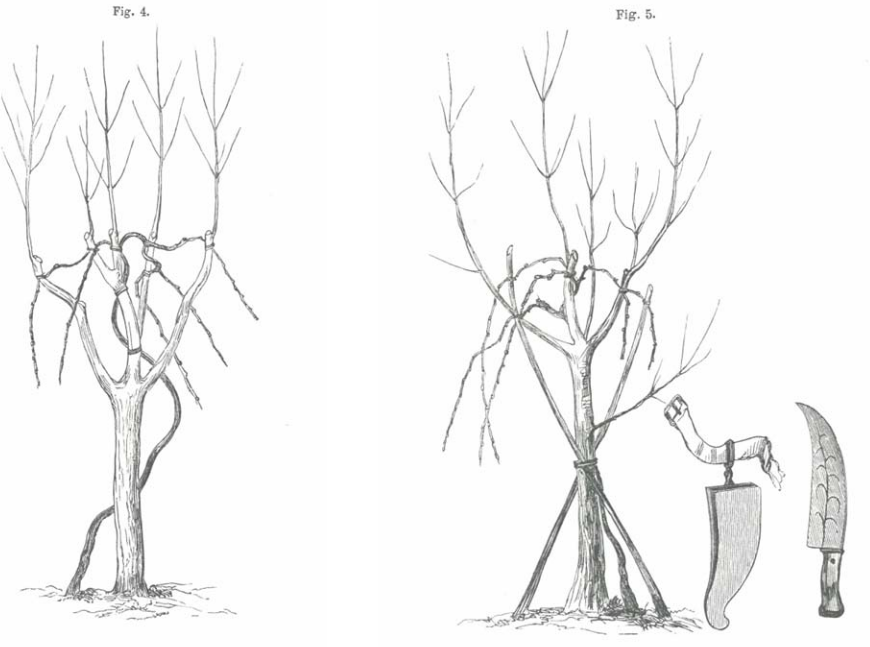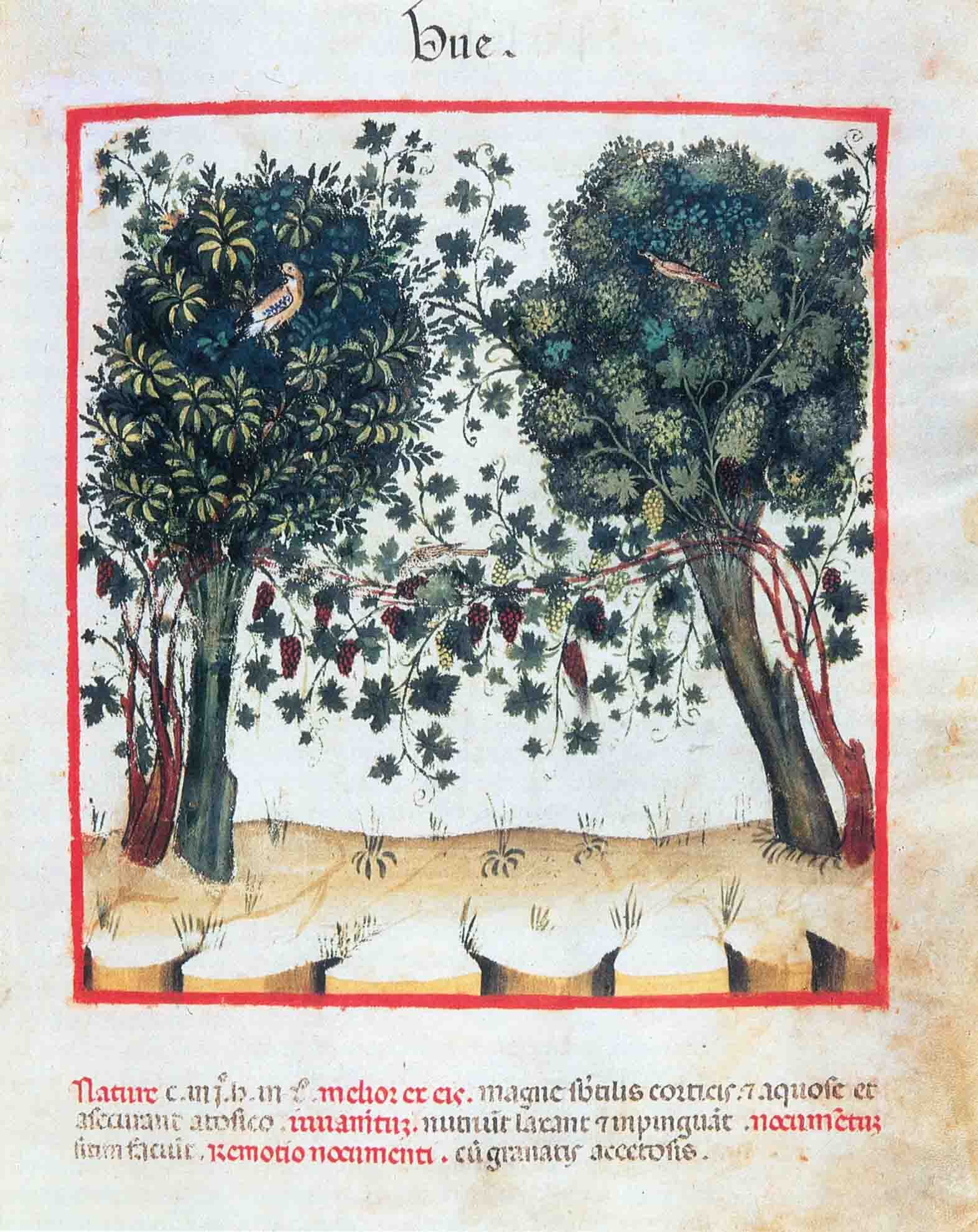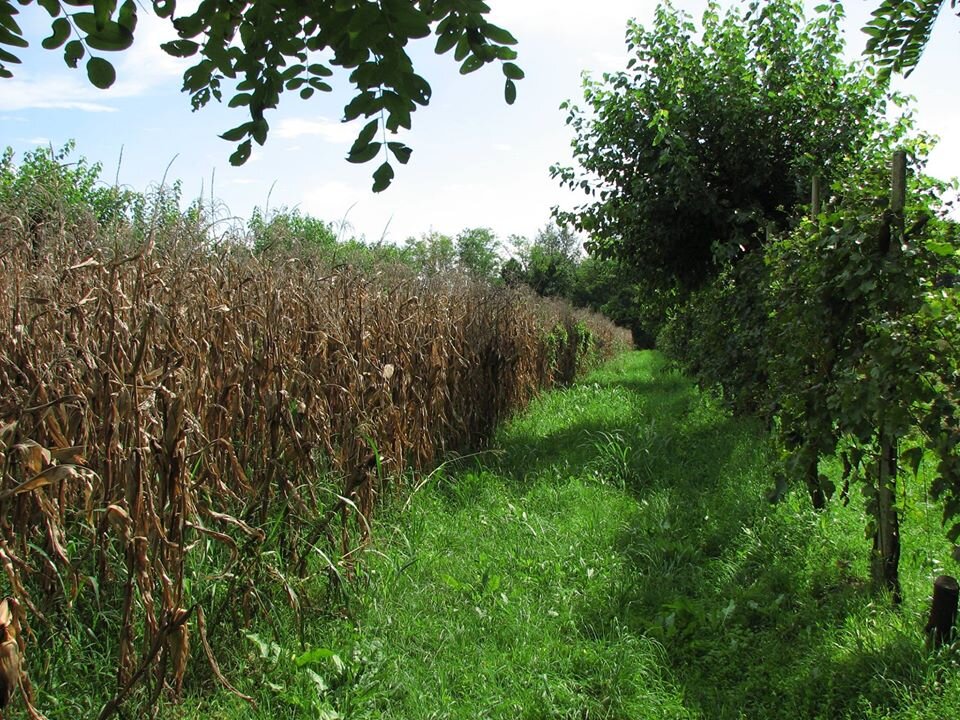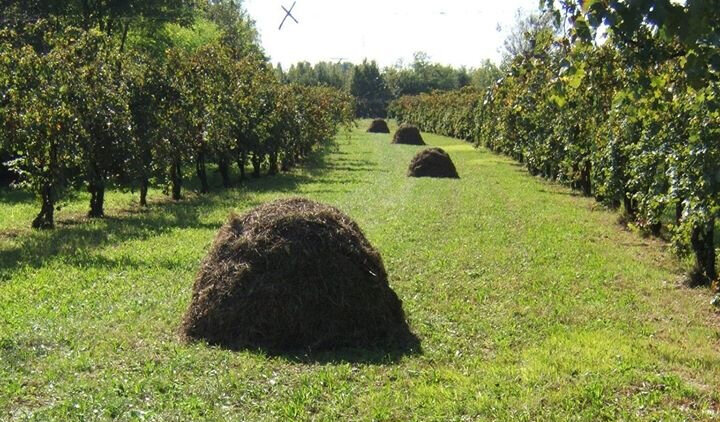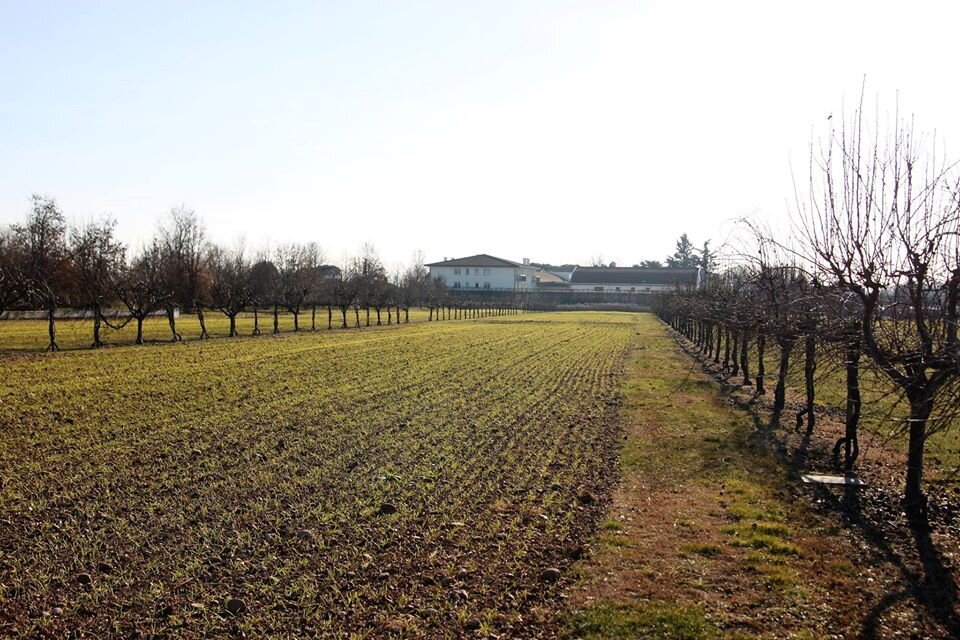The Lost Forest Gardens of Europe
Contents
People of the Hazel: Europe’s indigenous cultures return after the glaciers retreat, bringing their most cherished tree with them
The Continent-Wide Orchard: Mesolithic people create Europe’s post-glacial ecosystems as vast forest gardens
A Changing Climate: millennia of drastic fluctuations in the climate lead to the creation and spread of grain-based agriculture
Strength in Diversity: early farmers innovate resilient crop mixes and companion planting to guard against climate change
Hybrid Cultures: Europe’s new creolized societies mix the best of hunter-gatherer and farmer cultures, practices, livestock, and crops to create entirely new ways to grow food
The Domesticated Forest Garden: farmers in the Mediterranean adapt their region’s hunter-gatherer forest gardens into diverse multi-story farms, creating resilient agricultural forests of domesticated crops that exist to this day
Towards a New Culture: imperialist monoculture farming systems take precedence in Europe, but the indigenous forest garden methods survive in the margins. These ancient methods are nearly forgotten, but they can provide a framework for rethinking the way we live and grow food in a changing climate.
Introduction
In the hills above the Po river in northern Italy, there are a handful of farms that look almost the same today as they would have three thousand years ago.
There are rows of short pruned trees, with fruit-laden grape vines festooned between them. The trees are common natives in the area that produce fruit, firewood, basketmaking materials, and fodder for farm animals. The grapes are ancient cultivars that have been grown here for millennia. Between these rows of grapes and trees are diverse plots of cereals, hayfields, vegetables, and herbs. In a single field, one can find all of the staples needed to live and support the farmstead, and more to sell at a high premium. This is a resilient system - a farm modeled on a forest. Unlike monocultures of grapes or grain, diversity is the strength here. Disease outbreaks and unseasonable weather have a limited impact. If one crop has a bad year, there are a dozen others to pick up the slack. These are agricultural ecosystems designed to last millennia - and that is exactly what they have done.
A row of field maples (Acer campestre) trellis grape vines, and are pollarded to harvest ‘tree hay’ fodder for livestock. Maize grows beside the row. The grapes are harvested to make wine. Source.
This style of growing is called coltura promiscua - “mixed cultivation” - a practice with roots that run deep in these hills. It is one of a handful of truly indigenous systems of farming remaining throughout Europe, adapted and perfected over thousands of years from the earliest hunter-gatherers through to the present day. It has shrugged off extreme climate change events, countless wars and invasions, pestilence and plagues, cultural erasure and colonization. This is the kind of farming system that is needed in the 21st century: a fully-integrated three-dimensional farm ecosystem that supports people and animals, provides staples and specialty products, increases local biodiversity, and does not require chemicals or elaborate technology.
Whereas modern industrial agriculture is descended from a distinctly imperialist Roman plantation system based on slave labor, systems like coltura promiscua are the direct descendants of the indigenous forest gardens of pre-agricultural Europe. Since the Neolithic Revolution, an assortment of farming systems in Europe that relied heavily on monocultures and a handful of finicky staple crops often ended abruptly and violently. The diverse forest gardens of peasants, however, have quietly shrugged off ten thousand years of turbulent changes. This article is a look at the little-known history of these systems and their innovative strategies for survival.
As we search for ways to remake the way we garden, farm, and live in a time of climate change, extreme inequality, and political disarray, looking back at the innovations of Europe’s hidden agroecological past can provide invaluable lessons on how we might collectively move forward.
People of the Hazel
A Mesolithic shaman’s deer headdress from Star Carr in northern England. Source.
Our story begins with the last retreat of the glaciers from Europe around 15,000 years ago, a period known as the Mesolithic (‘middle stone age’) which ended with the introduction of farming from the Near East five to ten thousand years later. Mesolithic Europe, populated entirely by hunter-gatherer tribes, was an incredibly diverse place in terms of ethnicity, culture, land management, religion, and food. Societies across the continent innovated unique ways to thrive in their respective landscapes for millennia.
Mesolithic people constructed their houses from locally-available materials. Hazel poles often comprised the skeleton of the structure, and reeds like Phragmites australis (now endangered in Europe, but a common invasive in North America) were used as thatching. Mesolithic societies were experts at creating thriving societies whose only traces were stone tools and a more diverse landscape. Source.
After the glaciers retreated, the continent was a cold tundra of lichens, mugwort, dwarf willow, and sea buckthorn - populated by prehistoric megafauna and migratory bands of humans returning from their Ice Age refugia in the mountains. Around 9,600 BCE, global temperatures rose 7°C in less than a decade, allowing for temperate deciduous forests to return. Populations of Mesolithic humans expanded rapidly across Europe, bringing their most prized plant with them: hazel.
Much as peaches, once introduced, were spread across North America by indigenous people in a matter of decades, the pollen record shows that hazel (Corylus avellana) suddenly becomes ubiquitous across Europe as soon as the climate warmed, brought to every corner of the continent by hunter-gatherers. Hazel was the original Tree of Life for Mesolithic Europeans. The nuts are about 60% fat and 20% carbohydrates, and contain a wide range of proteins, vitamins and minerals - a few handfuls can cover most of a person’s daily energy needs. Its branches, tall and flexible but slender enough to cut with a flint axe, were used for tools and firewood. Mesolithic thatched huts were often made with hazelwood beams. From cradle to grave, the people of Mesolithic Europe relied on hazel more than any other single plant. Excavations of habitation sites from this period can turn up hundreds of thousands of roasted hazelnut shells. For over five thousand years, this single plant was the lifegiver to nearly all of Europe’s people.
The Continent-Wide Orchard
In addition to hazel, Mesolithic people utilized up to 450 different species of edible plants - many of which were common plants of forest edge habitats. Wild vegetables (many of which are considered weeds today) like nettle, knotweed, lesser celandine, dock, lambs quarters, fruits like sloe plum, rowan, hawthorn, crabapple, pear, cherry, grape, raspberry, and tubers of aquatic plants were all part of the Mesolithic diet. These European native plants were likely utilized by Mesolithic hunter gatherers for the same reason they are often seen as weeds today: they’re extremely resilient, aggressive, and adaptive species that can be encouraged to grow with minimal effort.
These were not bands of starving cavemen constantly on the precipice of death, but rich and resilient societies that had a much more diverse diet than most present-day Europeans. Researchers found that a young girl who died 5,700 years ago in southern Denmark ate duck and hazelnuts - a far richer (and tastier) diet than most kindergarteners in Western countries have today.
And for their rich and diverse diet, Mesolithic people worked less than anyone who came after. Hunting and gathering requires just a few hours of work each day - far easier than farming, much less modern work schedules. After helping to create Europe’s forests by bringing favored plants like hazel with them, they continued to manage their landscape with hand tools and fire. Europe was not a pristine wilderness, but a continent of handcrafted nut orchards and semi-wild forest gardens carefully managed for thousands of years. This tracks with common themes around the world: indigenous people in Australia, North and South America, and elsewhere have used fire and specialized hand tools to achieve unprecedented levels of environmental stewardship and management for millennia. Nor was this anything new: humans (and their Neanderthal and Homo heidelbergensis ancestors) have been shaping Europe’s ecology for over 800,000 years. These Mesolithic forest gardens were simply the most recent and nuanced manifestation of an ancient ecological relationship.
Controlled burns of the forest and savannah allowed Mesolithic Europeans to alter and diversify their environment on a large scale, creating new habitats that fed people and supported more wildlife. Source.
Areas around settlements and camp sites were regularly burned to limit the encroachment of the forest, and to favor food-producing forest edge trees species. These controlled burns established open park-like habitats, which could lead to a tenfold increase in the amount of wild game animals present, creating greater opportunities for hunting red deer, wild boar, and aurochs. In some places, people created forest openings to encourage the growth of English ivy (Hedera helix) - a favorite food of red deer. These ivy patches essentially served as semi-wild feedlots in the wintertime, allowing people to hunt deer, or possibly even to establish semi-domesticated herds (much as the indigenous Sami people in northern Scandinavia have today with semi-domesticated herds of reindeer).
Coppicing was another important strategy for managing the Mesolithic forest garden. Certain trees and shrubs, like hazel, can be cut to the ground every few years. Instead of hurting the tree, this effectively rejuvenates it, allowing the plant to live far longer than it would if unmanaged. Hazel in a wild state generally lives around 70 or 80 years, but with regular coppicing it can thrive and produce wood and nuts for centuries. Willow, another plant with many uses and benefits, is managed in this way as well. Coppicing lent itself perfectly to Mesolithic technology: without saws or metal tools, it was far easier to harvest small-diameter trees and branches than large trunks. For cultivating or regenerating patches of wild vegetables or semi-domesticated grains, Mesolithic Europeans also had a wide range of hand tools at their disposal, including flint axes, wooden and antler hoes, mattocks, and digging sticks. The open forest gardens that surrounded Mesolithic camp sites and settlements could be managed this way for millennia.
A Changing Climate
For thousands of years, Mesolithic people across Eurasia had lived by their covenant with the web of life: a sacred pact that was defined by reciprocal relationships with their human and non-human neighbors. Unbeknownst to them, however, major events half a globe away were about to change this way of life forever.
Around 10,800 BCE the North American ice sheets collapsed, causing glacial melt waters to cool the North Atlantic and kickstarting a global drop in temperatures. Within a few centuries, conditions in Europe and the Near East were almost as cold as the previous Ice Age. This period, known as the Younger Dryas, lasted for over a thousand years. In the Near East, hunter-gatherer cultures saw their entire way of life collapse. Their Edenic landscape of fruit and nut trees withered in the cold, the large herds of wild game disappeared. They had always grown and eaten the seeds of native grasses as a supplemental part of their diet. During the Younger Dryas, however, these grasses (and some legumes) became the only crops they could reasonably rely on. A thousand years of planting and harvesting had the effect of fully domesticating these species. When the climate finally warmed again in 9,600 BCE, they had a crop that had never been seen before: grain. Wheat, barley, peas, beans, and flax had gone from wild survival foods to domesticated staples. A period of dramatic climate change had brought about a new class of food that would forever change the world. This new age, defined not by hunting and gathering, but by the cultivation of grains, is known as the Neolithic (“new stone age”).
The traditional narrative states that the ‘Neolithization’ of Europe (the replacement of hunting-gathering with grain farming) occurred as a wave from ~6,500 BCE in Greece to ~2500 BCE in Scandinavia, with farming cultures from the Near East bringing grain and livestock, leading to the end of the inferior Mesolithic hunter-gatherer way of life. A wealth of recent archaeological evidence, however, points to a very different story.
Every dramatic change or fluctuation in climate, from the Neolithic to the present day, precipitates major changes in agriculture. As we’ve seen, people created productive environments by spreading hazelnuts across Europe when the climate warmed after the Younger Dryas. The Little Ice Age of the 17th century led to massive failures in Europe’s grain harvest, prompting the widespread adoption of the potato and other New World crops. Similarly, the adoption of cereal farming in Europe did not happen at a continuous pace, but occurred in surges associated with severe climate fluctuations over the course of thousands of years.
Some of the oldest landraces of grain are still grown on the fringes of Europe. This ‘Bere’ barley has been grown in the Hebrides islands of Scotland for around 6,000 years. It is so old that its name is from a pre-Indo-European language that is now extinct. This barley has been preserved by small crofters for millennia and, like many ancestral crop landraces, has unique adaptations and qualities that are missing in modern barley varieties.
Grain was a radically new type of food for Europeans. Unlike tree crops that take years to mature, cereals provide immediate food security in a pinch as they can be grown and harvested in a single season. With each period of climate-induced chaos in Europe’s prehistory, cereal farming communities expanded ever deeper into Mesolithic Europe. When conditions improved, these farming communities grew in population far more quickly than the relatively stable hunter-gatherer tribes. Mesolithic people were not unaware of grain growing - they had been experimenting with it for millennia before Near Eastern farming cultures entered the scene. The spread of farming, therefore, was not due to the supposed superiority of grains, but because repeated periods of climate change and the resulting social chaos pushed Mesolithic Europeans to adopt new ways of life to survive.
Indeed, Mesolithic hunter-gatherer communities continued to live peaceably side-by-side with Neolithic farming communities for thousands of years before adopting agriculture. As in many parts of Europe, the cultures of Mesolithic Sweden had depended on hazelnuts for millennia - with some scholars even dubbing this period the “Nut Age.” When Neolithic grain-farming communities entered southern Sweden around 5,500 BCE, the native hazel-based cultures continued to practice their traditional ways for another 1,600 years. It was only when a period of dramatic cooling began that hazel populations in the region plummeted and Mesolithic communities, now without their sacred life-giving tree, adopted grain farming by 3,900 BCE. This was a story repeated throughout Europe. And while nearly all of Europe eventually came to adopt grain farming, the resilience of these Mesolithic cultures over the course of millennia demonstrates that hazelnuts are perhaps the best option for a perennial crop that can replace grains in a temperate climate.
Strength in Diversity
For the first few millennia of farming in Europe, before the advent of traction ploughing, families cultivated the land with digging sticks, hoes, mattocks, and footploughs. This was human-scale agriculture, unable to expand past the limits of a person’s energy. As a result, Neolithic farming communities generally did not overexploit their environment, but instead cultivated small plots of land for vast lengths of time with hand tools, crop rotations, and fertilization from livestock manure, compost, and night soil - leaving the land they tended more fertile than when they found it. These ancient farmsteads were the original “regenerative farming” innovators, and in many ways resembled today’s small organic farms and homesteads of a few acres. Monocultures did not yet exist as a concept.
Grains were not grown as fields of a single variety, but as diverse mixes of cereals and legumes called ‘maslins’ (or ‘mashlum’ in Scots). Ancient grains like emmer, einkorn, and barley were grown together with peas and lentils. Hemp, flax, and poppies were common supplemental crops as well. These diverse mixed fields were far more resilient than monocultures - in some parts of Europe, they’ve existed unchanged for 4,000 years.
In modern grain farming, a single variety of wheat is planted over hundreds of acres. If a season is unfavorable, the farmer will lose the entire crop. Ancient maslins, however, protected against this. Seasonal weather differences might benefit einkorn one year, and barley the next. Whether the year was cold or hot, wet or dry, there would always be a crop to harvest. Unlike modern varieties, ancient grain landraces were bred to have a long harvest window that protected them against total crop failure in case of a freak weather event. Maslins of crop landraces were a simple but effective way for small farmers to hedge their bets against variable seasonality and climate change. Newer research into growing mixes of cereals and legumes has confirmed what Neolithic farmers always knew: that these intercrop mixes of grain and legumes are superior to monocultures by nearly every metric.
Hybrid Cultures
Along with grains and legumes, Neolithic farmers brought domesticated livestock like cattle, pigs, goats, and sheep. Because these Near Eastern landraces of farm animals were not always well-adapted to Europe’s climate and conditions, farmers often intentionally cross-bred their domestic cows and pigs with native aurochs and wild boar in Europe, resulting in offspring that were domesticated but far better adapted to local conditions. Many of the oldest European landraces of cattle and pigs today are the direct descendants of these Neolithic hybrids of wild and domesticated animals. The Iberian pig, a Spanish landrace that is made into the world-famous jamón ibérico, is very similar to its Neolithic ancestors - a mix of swine and wild boar genetics.
Iberian pigs forage below oak trees in a Spanish dehesa. Source.
In Spain the Iberian pig is a central component of the dehesa system - an ancient agroecological masterpiece. The dehesas are man-made oak savannahs throughout Spain and Portugal, populated with traditional landraces of livestock on grassland, with holm oak (Quercus ilex) and cork oak (Quercus suber) dotting the landscape. Jamón ibérico, wild game, and non-meat products like truffles, mushrooms, honey, fighting bulls, and cork are valuable yields in this system.
Cattle graze in a cork oak savannah - a classic dehesa ecosystem that produces much of the cork used in Europe’s wine industry. The cork is in the bark of the tree and is periodically removed, as can be seen here. Source.
As an agroecosystem it has existed in its basic form for at least 4,500 years, and in essence is a domesticated form of the fire-managed Mesolithic nut tree savannahs - replacing aurochs and wild boar with cattle and pigs. Not only is the dehesa a low-input silvopasture system, it has existed for so many millennia that it is now an important ecosystem in its region, allowing it to support an enormous range of biodiversity (including endangered species like the Iberian lynx, imperial eagle, and black vulture). These systems challenge the very definition of farming, and show us what agriculture can be when people create it as a fully-fledged ecosystem, rather than simply a way to mine nutrients from the soil.
This documentary is an excellent introduction to the dehesa system
In other areas, the adaptation of the Mesolithic forest garden took the form of fruit-chestnut silvopastures created as semi-natural open forests. These included diverse nut and fruit assemblages (such as chestnut, carob, almond, fig, olive, hazel, cork oak) that allowed for livestock grazing beneath them. A culture of chestnut forest management in Corsica shows how the use of perennial nut crops as a staple has never left Europe.
Annually coppiced willow beds are a source of fine materials for wickerwork and other crafts. Source.
The practice of coppicing trees did not end in the Mesolithic either. The wild willow-thick streambanks became managed willow beds that were planted with cuttings of the best plants. These willow beds were coppiced every year for crafts and toolmaking. Wicker basketry became such an elevated artform in the British Isles that fine Celtic baskets were imported by Roman aristocrats. The word ‘basket’ itself (originally ‘bascauda’) is one of the only words of Celtic origin in the deeply colonized English language. Coppice woods of chestnut, linden, hazel, and other useful species have remained an essential and ancient part of the British landscape, providing materials for housing, tools and crafts, charcoal production, mushroom cultivation, and even rich pockets of endangered biodiversity.
Old coppice woods are irreplaceable habitats for rare species, including these bluebells - a species associated with ancient woodlands
One of the most recognizable evolutions of Mesolithic forest gardens, however, is the hedgerow. The most common forest edge species of fruits and nuts that were cultivated by Mesolithic people - sloe plum, rowan, hawthorn, crabapple, wild cherry, brambles, etc. - also happen to be the most common hedge plants in northern Europe. During the Neolithic Revolution, new farming cultures discovered an innovative way to manage and integrate these species by planting them thickly in rows around their farms and cereal fields, and periodically rejuvenating them with strategic pruning. The native forest edge ecosystem - in essence, the plant supermarket of Mesolithic people - was compressed into an architectural feature of the new agrarian landscape as a multifunctional barrier that demarcated land, kept livestock in or out of certain areas, and provided food, fodder, firewood, tool handles, medicine, and other materials.
Hedgerows are living boundaries with enormous functionality and ecological benefit. Source.
Hedgerows were sometimes used as defensive barriers as well: the Nervii tribe of northern Gaul nearly wiped out Caesar’s invading legions in 57 BCE by using their hedgerows to limit Roman maneuvering. In the present day, Europe’s hedgerows provide a new benefit in serving as a repository for biodiversity. In highly deforested areas like Ireland, hedgerows are often the largest gene bank of native tree biodiversity that has otherwise been lost. They also serve as a crucial corridor for wildlife, connecting the few remaining patches of natural space that remain. The wild fruit orchards of indigenous hunter-gatherers exist to this day in the form of these living barriers that crisscross the old fields of central Europe.
The Domesticated Forest Garden
The new creole societies that arose in Europe were fantastically diverse, mixing Mesolithic hunter-gatherer cultures and the newer farming communities. Cultures that strayed too far from their hunter-gatherer roots and relied too heavily on a handful of grain crops, like the Linear Pottery culture of central Europe, were able to expand rapidly but could not maintain a sustainable existence. As soon as the climate began to deteriorate, the Linear Pottery culture collapsed in on itself with unprecedented violence.
Other hybrid cultures that emerged from this time, however, found ways to marry the best of both worlds. These societies relied on the new cereals for their staples, but supplemented them with a broad range of indigenous foods and growing systems. Some places saw hunter-gatherers adopt domesticated livestock but eschew grain, while in others Neolithic farmers embraced local land management techniques and native tree crops. The two radically different societies rarely came into conflict, and intermarriage between them was common throughout Europe. Many Mesolithic practices, beliefs, and systems were blended into the new European societies as a result of this peaceful intermingling.
In the Euganean hills above the Po river in northeastern Italy, a Neolithic culture combined the cereal crops of the Near East with Mesolithic forest garden management. Farmers performed controlled burns of their landscape, radically changing the local ecosystem from a linden-fir forest to a chestnut-walnut grain savannah. For 5,000 years, these farmers regularly set low-level fires that cleared out weeds and small trees, and sowed cereals, flax, and hemp in the fresh soil. They planted chestnut and walnut trees in these cereal fields, along with olives, grapes, and willows, creating a diverse multistory agrarian landscape that provided a wide range of products and crops from a single area. This type of farming is reminiscent of the famous indigenous milpas of the Americas - to this day, some of the most advanced agricultural systems in the world.
The introduction of agriculture in Tuscany also saw the managed forests of the Mesolithic reorganized into a more domesticated form on the farm. Unlike most places in Europe, Tuscany maintained a great deal of its ancestral culture, avoiding the worst of the Indo-European invasions that wiped out much of the continent’s indigenous cultures during the Bronze Age. As such, the region maintained an unbroken link to its prehistoric past even up through the Etruscan civilization in the Iron Age.
The Etruscans enjoyed a highly diversified diet that consisted of many different annual grains and legumes, along with perennials like cultivated grapes, wild cherries, hazelnuts, acorns, olives, pears, and figs. The first wine here was made with native Cornelian cherries (Cornus mas), before superior grape varieties were introduced through trade. The Etruscans developed a diverse forest garden system that has become known in Italian as coltura promiscua, or “mixed cultivation.” Like the extensive forest gardens of the Euganean hills, these farms were a creolization of local Mesolithic agroecology - tree crops and native perennials - with Near Eastern cereal farming. It is a system that has survived to the modern day.
The practice of trellising grapes into trees is one of the most ancient parts of this system, known as alberata, vite maritata, or arbustum gallicum. Roman authors wrote extensively about its use: Pliny claimed that vines grown on trees produce better wine (a claim that is also echoed in American viticulturist T.V. Munson’s observation that these vines also avoid rot and mildew). The tree to which the grapevine is “married” changes based on local environmental and economic factors. In some areas of Italy, the mulberry has been used as grape trellis in order to provide fruit, livestock fodder, and silk worm rearing. In wet areas, willow or poplar was used. In the hills, cherries were often the trellis. Everything from field maple and chestnut to olive and elm can be utilized in this system.
Coltura promiscua is, at its core, a domesticated facsimile of the prehistoric forest garden. Whereas their Mesolithic ancestors had gathered wild grains, fruits and nuts, medicine, and wood from the managed forest surrounding their villages, Etruscans and their descendants created a complex polycultural system that maintained these elements in a controlled and linear setting: domesticated grapes climbing rows of (usually native) trees that are pollarded for fodder or materials for basketry and firewood, or harvested for fruit and oil, all enclosing small fields of diverse grains, legumes, hay, and vegetables that are rotated to maintain fertility. This system allows for the production of staple crops and specialty products for market, and expands the ability to farm to a wider range of soils and conditions.
These domesticated landscapes are fully integrated into the local ecosystem, forming networks of connectivity between local woodlands. As mosaics of trees, grains, stone features, and waterways, they create oases of profound biological, hydrological, and geological diversity in the landscape. The diversity and strength of this system made it resistant to invasion by the deadly Phylloxera that obliterated the weaker grape monocultures of France. Crop introductions, through invasions or trade routes, are the only major change this system has seen in two millennia. Species from Asia and the Americas (citrus, maize, etc.) have seamlessly entered coltura promiscua and are now staple crops in these systems.
Diverse, well-integrated farms like coltura promiscua support significantly more native biodiversity than modern monocultures. Source: BUNDESAMT, F. U., & LANDSCHAFT, W. U. (1997). Umwelt in der Schweiz 1997. Berna, Buwal.
Towards a New Culture
The ancient peasant farmers who fashioned this forest garden system continued to hunt wild game and harvest wild foods, just as their descendants in Tuscany do today. The culture and cuisine of Tuscany - from truffle hunting to winemaking - is part of a 30,000-year-old unbroken tradition and relationship with the land. The elegance and near-perfection of these temperate forest gardens is shown in how they have thrived for millennia on some of the most contested land in Europe, surviving climate change, war, pestilence, drought, and economic upheaval.
Only the proliferation of postwar neoliberal economic policy in the 20th century has managed to drive this peerless system to the brink of extinction. Indeed, coltura promiscua has nearly vanished in its native land for the same reasons that other European agroecological systems have disappeared. Urbanization and rural depopulation in the modern period have virtually eliminated traditional environmental knowledge and the labor base for maintenance and harvest. The intensification of the modern capitalist paradigm has incentivized extractive cash crop monocultures over self-sufficiency or regenerative methods. Postwar mechanization, which is built for monocultures and economies of scale, is not suited to the small, hand-tended agroecosystems that require a high degree of expertise in shaping and working with the natural world.
Medieval manorial feudalism, the American plantation system and Jim Crow, and modern industrialized farming are all descendants of the slavery-based monocrop agricultural systems that the Roman empire forced on the land in their effort to subdue and replace Europe’s tribal societies. Oppressive systems like these have always flown the banner of efficiency and profit without regard for human well-being or ecological destruction. This essential struggle between extractive imperialist systems, and indigenous land-based lifeways, is still ongoing across Europe and its former colonies - particularly the Americas. The rapid disappearance of the dehesas, coppice woods, willow beds, hedgerows, and Mediterranean forest gardens are all connected in this fight. What’s at stake in their survival is not the preservation of a bygone relic, but the protection and expansion of relationships with the land that can feed our communities, preserve biodiversity through climate change, and create productive ecosystems that last for millennia.
Despite what we’ve been told, the indigenous Mesolithic societies of Europe never disappeared: they adapted, and survived in new ways. Their cultures, values, spiritual beliefs, and relationships with the land are encoded in the folk traditions and regional agroecological systems that persist throughout Europe. These are an essential piece of an antidote to the toxic empire-based culture that currently holds sway over our society.
They are an example of what we might lose if we forget too much, but also of what we can create again. Our present crises of climate change, extreme inequality, imperialism run amok, and endemic violence eerily mirror the downfalls of previous cultures that relied too heavily on a handful of finicky crops and an expansionist ethos. But this time of chaos can also be an opportunity, a chance to emulate the older cultures that replaced them: those who planted trees in the ruins of empire, who remade the Commons on abandoned plantations, and quietly continued to tend their small forest garden as their ancestors had before them. We may have inherited the most destructive systems of extraction and exploitation ever seen, but we have also inherited the seeds for a better way to live: a way that our oldest ancestors knew and cherished.
Perhaps it is time that we plant those seeds once again.












